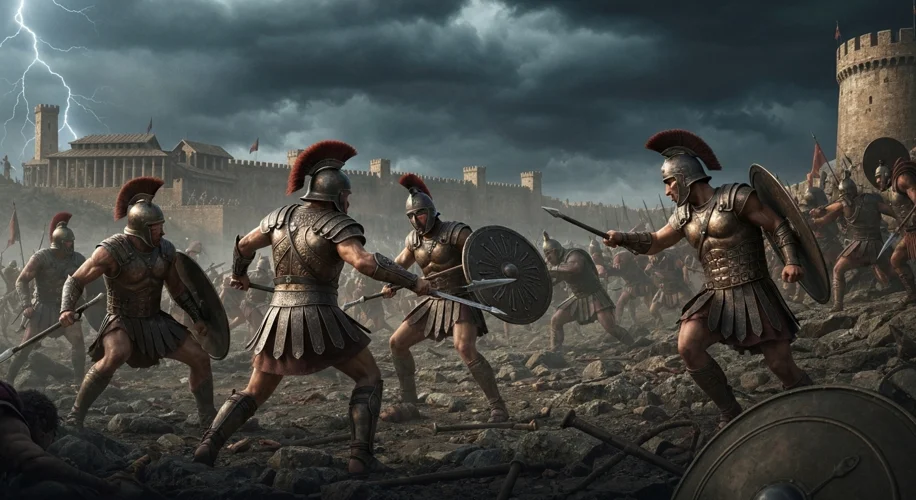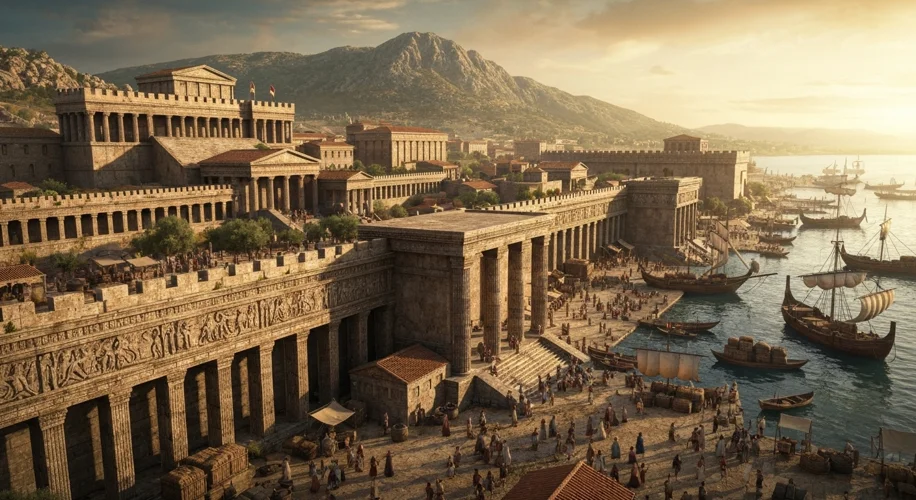In the annals of myth and legend, few stories echo with the thunder of hooves, the clash of bronze, and the lament of fallen heroes quite like the Trojan War. For centuries, this epic conflict between the mighty Achaeans (Greeks) and the proud city of Troy has captivated imaginations, a tale woven into the very fabric of Western literature, most famously through Homer’s Iliad. But beyond the poetry and the divine meddling, could there be a kernel of historical truth buried within this legendary struggle?
Imagine a world of bronze, of soaring city walls, and of kings whose words could sway armies. This was the world of the Late Bronze Age Aegean, a vibrant period of flourishing civilizations and complex trade networks. The Achaeans, a confederation of powerful kingdoms like Mycenae, Tiryns, and Pylos, dominated the mainland of Greece. Their culture was one of martial prowess, aristocratic values, and a burgeoning artistic expression, evident in the intricate gold work and imposing architecture unearthed by archaeologists.
Across the Aegean Sea lay Troy, also known as Ilion or Ilium, a prosperous city strategically located on the coast of Asia Minor (modern-day Turkey). Evidence suggests Troy was indeed a significant trading hub, its strategic position allowing it to control access to the Dardanelles strait. Archaeological excavations at the site, famously led by Heinrich Schliemann in the late 19th century, revealed multiple layers of settlement, with one layer, Troy VIIa, showing signs of violent destruction consistent with a siege around the 13th or 12th century BCE – the very period in which the Trojan War is traditionally placed.

The spark that ignited this colossal conflict, as Homer tells it, was the abduction (or elopement, depending on the version) of Helen, the most beautiful woman in the world, from her husband Menelaus, King of Sparta, to Paris, a prince of Troy. This insult to Menelaus, and by extension to his brother Agamemnon, the powerful High King of Mycenae, was an affront that could not be borne. Agamemnon rallied the disparate Achaean kings and their warriors, assembling a vast fleet and an army of legendary proportions to sail to Asia Minor and reclaim Helen and Menelaus’ honor.
At the heart of the Achaean host stood Achilles, the greatest warrior of his age, a near-invincible warrior whose mother was a sea nymph. His wrath, his skill, and his tragic destiny form the central narrative of the Iliad. Opposing him on the Trojan side was Hector, the noble prince of Troy, a devoted husband and father, and its most valiant defender. The tension between these two titans, their personal struggles, and their ultimate confrontation are central to the epic’s enduring power.
But the Iliad is not merely a catalog of battles. It is a profound exploration of human nature, of glory, honor, pride, and the devastating cost of war. We witness the agonizing grief of King Priam begging Achilles for the body of his son Hector, the agonizing decisions made by gods and mortals alike, and the sheer brutality of a conflict that raged for ten long years. The war was not just fought on the plains before Troy but also in the hearts and minds of its participants, burdened by the expectations of their kin, their gods, and their own insatiable desires for kleos – immortal glory.
The consequences of this legendary war, whether historical or purely mythical, were profound. Troy, according to the legend, was ultimately sacked and destroyed, its people scattered or enslaved. The Achaean victors, however, did not return to a peaceful homecoming. Many faced perilous journeys back to their homelands, altered by their experiences and often meeting tragic ends, a theme known as the nostoi, or returns. Agamemnon himself was murdered upon his return by his wife Clytemnestra.
While the precise historical reality of the Trojan War remains a subject of debate among scholars, the legend itself has had an immeasurable impact. It shaped Greek identity, provided a rich tapestry for art and literature, and served as a foundational narrative for the concept of heroism and the tragedy of war. The figures of Achilles, Hector, Helen, and Odysseus continue to resonate, embodying timeless human struggles and aspirations.
The story of Troy, therefore, is more than just an ancient battle. It is a timeless exploration of love, loss, duty, and the enduring quest for meaning in the face of overwhelming odds. It reminds us that even in the darkest hours of conflict, the human spirit, with all its flaws and glories, can shine through, leaving echoes that reverberate through the millennia.

